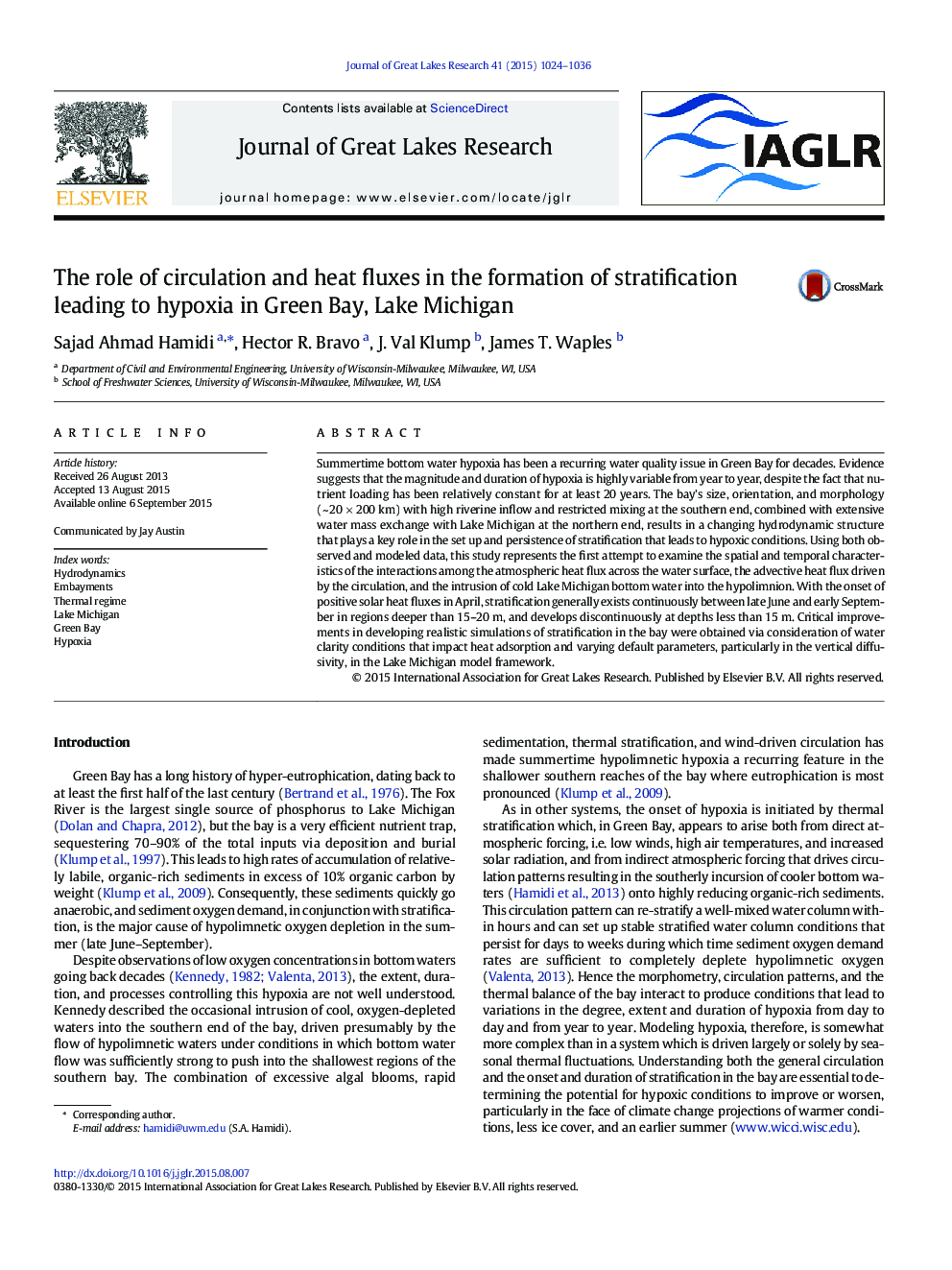| کد مقاله | کد نشریه | سال انتشار | مقاله انگلیسی | نسخه تمام متن |
|---|---|---|---|---|
| 6304836 | 1306676 | 2015 | 13 صفحه PDF | دانلود رایگان |
عنوان انگلیسی مقاله ISI
The role of circulation and heat fluxes in the formation of stratification leading to hypoxia in Green Bay, Lake Michigan
ترجمه فارسی عنوان
نقش گردش و شار حرارت در شکل گیری شیب دار منجر به هیپوکسیا در خلیج گرین، دریاچه میشیگان
دانلود مقاله + سفارش ترجمه
دانلود مقاله ISI انگلیسی
رایگان برای ایرانیان
کلمات کلیدی
هیدرودینامیک، مهاجرت، رژیم حرارتی، دریاچه میشیگان، خلیج سبز، هیپوکسیا،
موضوعات مرتبط
مهندسی و علوم پایه
علوم زمین و سیارات
علوم زمین و سیاره ای (عمومی)
چکیده انگلیسی
Summertime bottom water hypoxia has been a recurring water quality issue in Green Bay for decades. Evidence suggests that the magnitude and duration of hypoxia is highly variable from year to year, despite the fact that nutrient loading has been relatively constant for at least 20Â years. The bay's size, orientation, and morphology (~Â 20Â ÃÂ 200Â km) with high riverine inflow and restricted mixing at the southern end, combined with extensive water mass exchange with Lake Michigan at the northern end, results in a changing hydrodynamic structure that plays a key role in the set up and persistence of stratification that leads to hypoxic conditions. Using both observed and modeled data, this study represents the first attempt to examine the spatial and temporal characteristics of the interactions among the atmospheric heat flux across the water surface, the advective heat flux driven by the circulation, and the intrusion of cold Lake Michigan bottom water into the hypolimnion. With the onset of positive solar heat fluxes in April, stratification generally exists continuously between late June and early September in regions deeper than 15-20Â m, and develops discontinuously at depths less than 15Â m. Critical improvements in developing realistic simulations of stratification in the bay were obtained via consideration of water clarity conditions that impact heat adsorption and varying default parameters, particularly in the vertical diffusivity, in the Lake Michigan model framework.
ناشر
Database: Elsevier - ScienceDirect (ساینس دایرکت)
Journal: Journal of Great Lakes Research - Volume 41, Issue 4, December 2015, Pages 1024-1036
Journal: Journal of Great Lakes Research - Volume 41, Issue 4, December 2015, Pages 1024-1036
نویسندگان
Sajad Ahmad Hamidi, Hector R. Bravo, J. Val Klump, James T. Waples,
